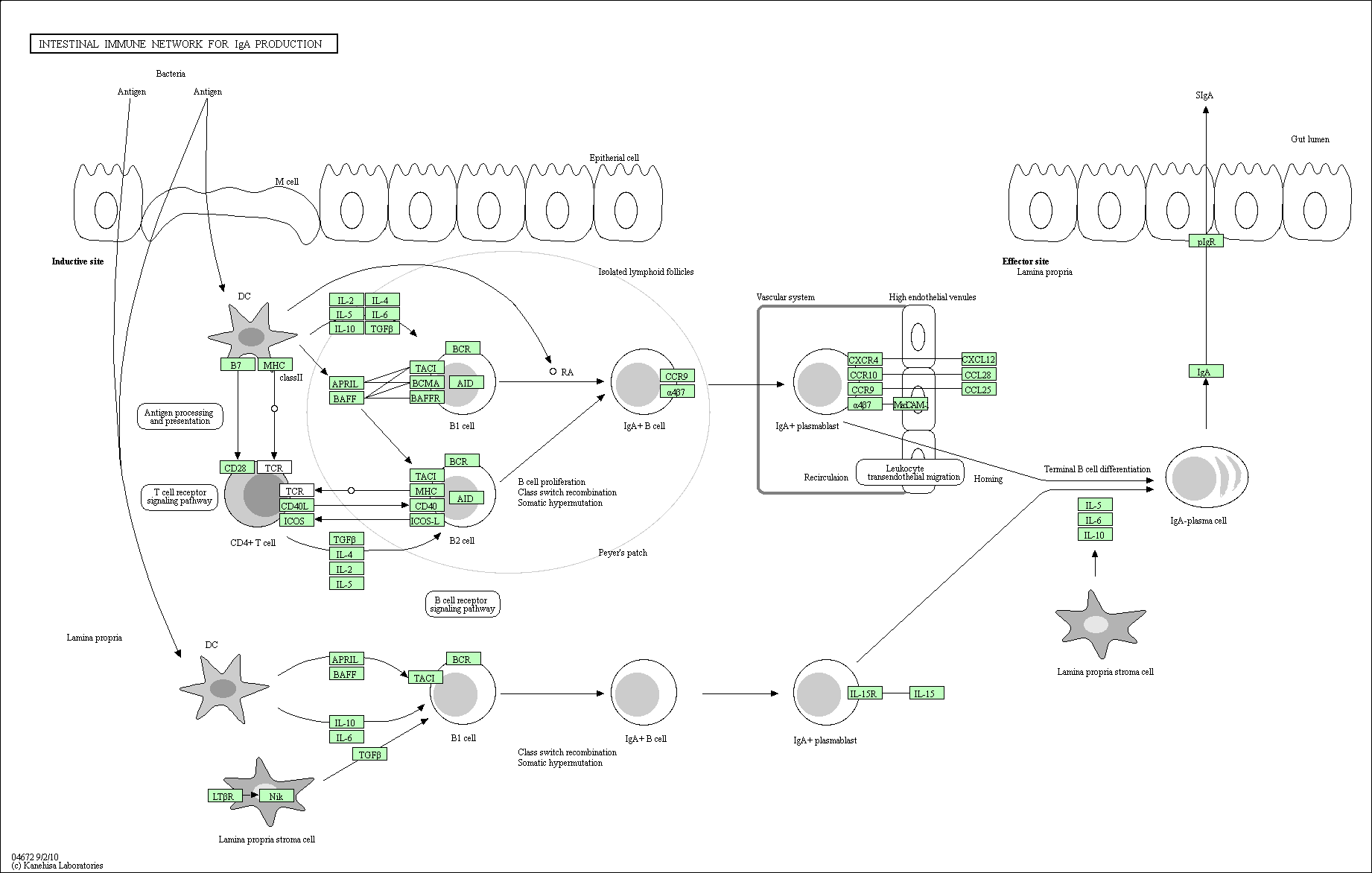Intestinal immune network for IgA production
The intestine is the largest lymphoid tissue in the body. One striking feature of intestinal immunity is its ability to generate great amounts of noninflammatory immunoglobulin A (IgA) antibodies that serve as the first line of defense against microorganisms. The basic map of IgA production includes induction of mucosal B cells in the Peyer's patches, circulation through the bloodstream and homing to intestinal mucosa of IgA-commited plasma cells, and local antibody production for export across the intestinal membranes. Multiple cytokines, including TGF-{beta}, IL-10, IL-4, IL-5, and IL-6, are required to promote IgA class switching and terminal differentiation process of the B cells. Secreted IgA promotes immune exclusion by entrapping dietary antigens and microorganisms in the mucus and functions for neutralization of toxins and pathogenic microbes.
